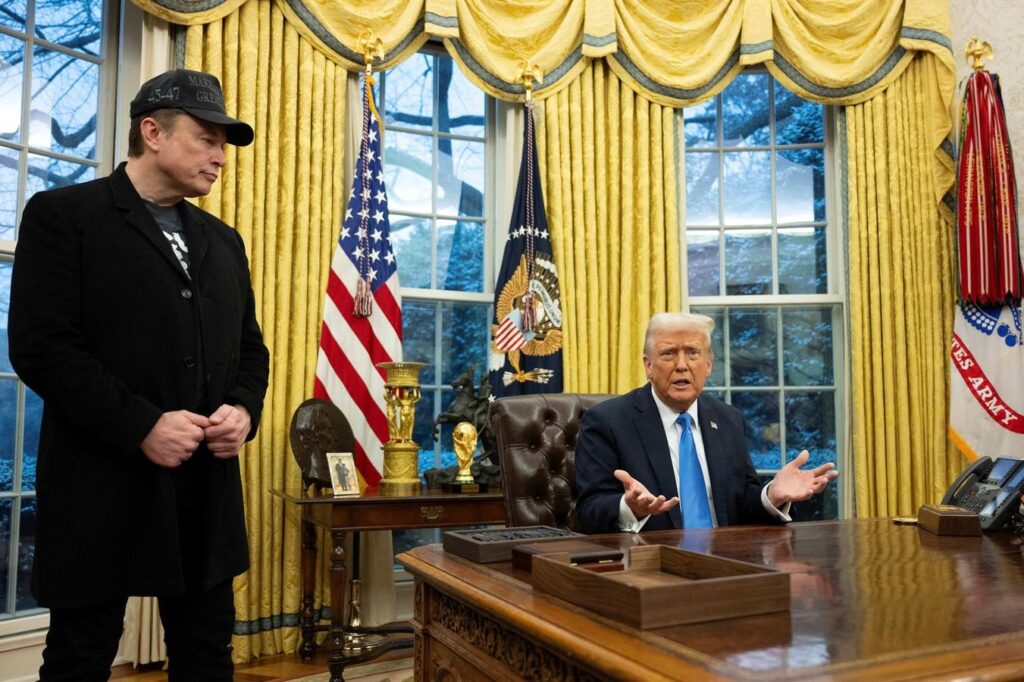Since the recovery from the Covid-19 pandemic began in mid-2020, U.S. economic growth has exceeded expectations and outperformed virtually all industrial economies. One of the main reasons is the federal government spent five times more on relief payments than during the 2008 financial crisis, and the Biden administration also added large government programs to fund infrastructure and climate change.
This resulted in federal net outlays surging well above the historic average of 20% of GDP, while revenues as a percent of GDP were close to their historic average according to the Peter G. Peterson Foundation.
The main concern is that the federal budget deficit has swelled. It exceeded 6% of GDP in 2024, roughly twice the average since the 1980s, even though the economy is operating at full employment. Moreover, the prognosis of the Congressional Budget Office is that future deficits are likely to stay abnormally high absent any policy changes.
Consequently, one of the priorities of the Trump administration is to rein in federal spending, and Congressional Republicans are drafting proposals to lower the deficit in future years. However, the prospect for making significant headway on deficit reduction is not encouraging.
The biggest challenge Republicans face is that mandatory programs account for 60% of total outlays. When net interest payments and defense spending are included, the amount of nondefense discretionary spending is only about 15% of total outlays). In 2024, this category totaled about $1 trillion.
With congressional Republicans targeting spending cuts of about $2 trillion, they will have to tackle some of the entitlement programs that have proved impregnable thus far. While President Donald Trump has declared that Social Security, Medicare and Medicaid are off limits, he recently endorsed the plan of House Republicans that would scale back Medicaid, which totals $550 billion, or 8% of total spending. It could provide a litmus test about whether mandated programs can be modified to meet budget goals.
Beyond this, one of Trump’s priorities is to scale back the size of the federal workforce to make it more efficient and “dismantle government bureaucracy.” To do so, Trump created a new advisory body, the Department of Government Efficiency led by Elon Musk. Part of its mission relates to IT upgrades, and many of its staff are young people with tech backgrounds.
When Musk was appointed, he stated that DOGE’s mission was to reduce U.S. national debt, which stands at $36 trillion. Initially, he said he hoped to save as much as $2 trillion per year, but he later cut this estimate in half.
Meanwhile, DOGE has been under pressure to provide transparency about the cost savings it has achieved. As of mid-February, its website claims that it had realized $55 billion in savings, but some of the figures have been disputed by various news agencies. The actions include axing USAID, making a buyout offer to two million government employees, taking control of the Consumer Financial Protection Bureau and eliminating “fraud and abuse” and “woke” policies.
These actions have raised considerable controversy, and Douglas Holz-Eakin, a former Republican director of the CBO told Reuters: “They are not going to agencies that are doing things they like. They are going into agencies they disagree with.”
University of Pennsylvania Professor John J. Dilulio, Jr. of the University of Pennsylvania in a piece for the Brookings Institution claims the main problem with Musk’s approach is that it focuses on full-time government employees, but “the real deep state is the contractor state.” He points out that eliminating the entire federal workforce would reduce total spending by only five percent.
By comparison, the number of people who get paid by the federal government but work for private businesses and nonprofits is now more than three times larger than the entire federal payroll.
The biggest government contracts consistently go to mega-corporations via the U.S. Defense Department, while nonprofits registered with the I.R.S. receive about 30% of their more than $2 trillion annual revenues from the government. The potential for abuse is high according to Dilulio, because contractors have spent decades weakening federal oversight. He maintains the best way to roll back payoffs is to require contractors and their highest paid executives to disclose all donations and contributions.
Dilulio concludes that if Musk acknowledges the whole truth about how the federal government works, face up to the contractor state, face it down, and start by ending improper payments, he will have outdone himself and served the country very well indeed.
Finally, it is important to realize that improved government efficiency will not be sufficient to put the federal budget on sound footing. In fact, the plan House Republicans are putting forth would add $2.8 trillion or more to public debt over the next 10 years according to the Committee for a Responsible Budget. The assessment of the Cato Institute, which favors limited government, is that the House budget “pairs wishful thinking with modest fiscal restraints.”
One of the main impediments to deficit reduction is that an extension of the Tax Cut and Jobs Act would reduce federal revenues by an estimated $4.5 trillion over 10 years. And this tally will balloon to nearly $8 trillion if tax cuts that Trump proposed during the presidential campaign for Social Security, tips, overtime work and other items are included.
The last president to achieve a budgetary surplus was Bill Clinton in the late 1990s. He did so by reducing federal government spending as a share of GDP from 22.2% in 1992 to 18% in 2000, while also raising the marginal tax rate on high income earners from 36% to 39.6% in 1993 to boost federal revenues. In his 1998 and 1999 State of the Union addresses, he also called on the nation to save the surpluses until the solvency of Social Security was assured.
If Republicans want to restore fiscal responsibility, they should study Clinton’s playbook. Otherwise, investors should expect outsized budget imbalances to continue for the foreseeable future, which would likely keep bond yields elevated.
Read the full article here


